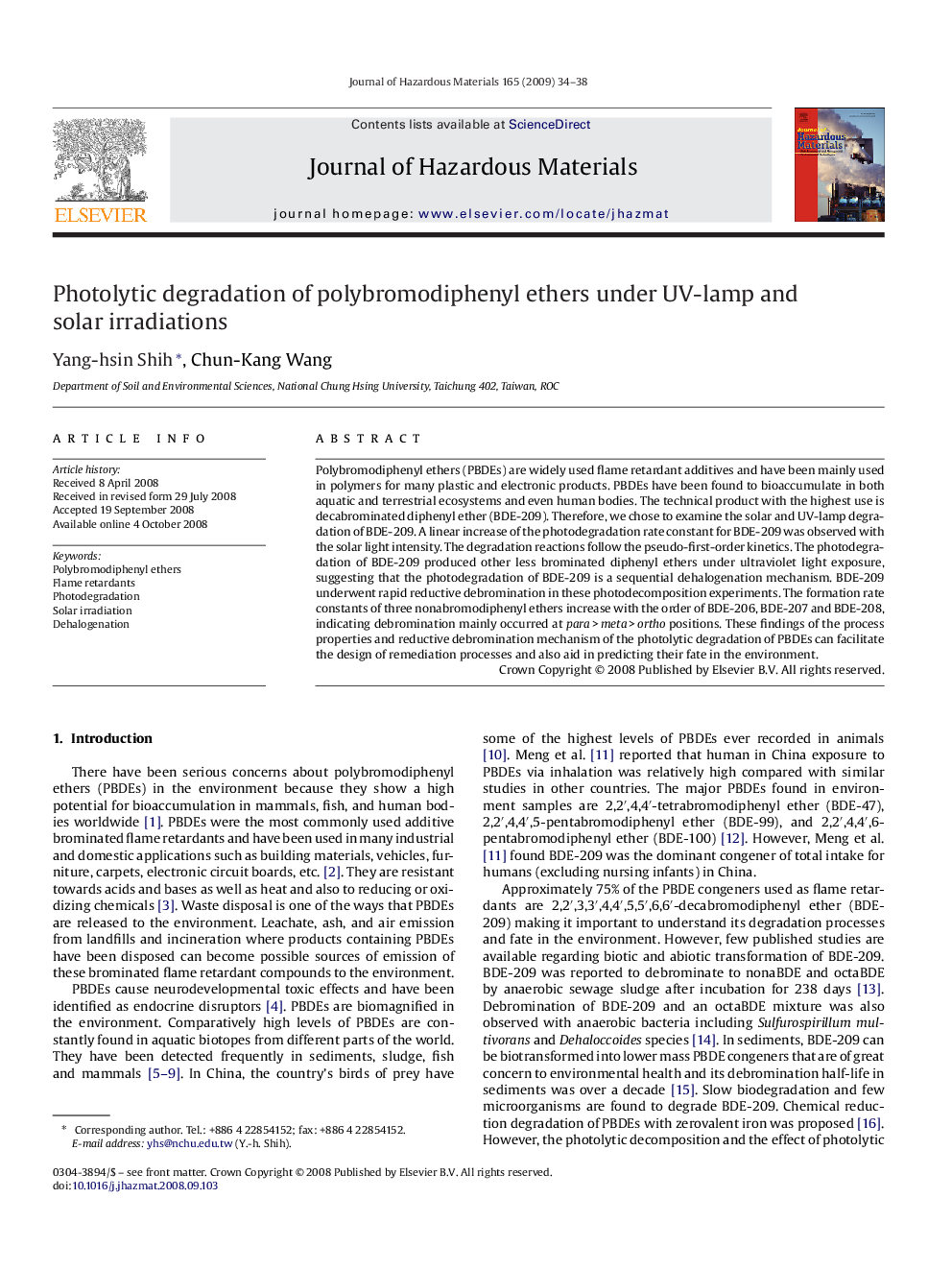| Article ID | Journal | Published Year | Pages | File Type |
|---|---|---|---|---|
| 582242 | Journal of Hazardous Materials | 2009 | 5 Pages |
Abstract
Polybromodiphenyl ethers (PBDEs) are widely used flame retardant additives and have been mainly used in polymers for many plastic and electronic products. PBDEs have been found to bioaccumulate in both aquatic and terrestrial ecosystems and even human bodies. The technical product with the highest use is decabrominated diphenyl ether (BDE-209). Therefore, we chose to examine the solar and UV-lamp degradation of BDE-209. A linear increase of the photodegradation rate constant for BDE-209 was observed with the solar light intensity. The degradation reactions follow the pseudo-first-order kinetics. The photodegradation of BDE-209 produced other less brominated diphenyl ethers under ultraviolet light exposure, suggesting that the photodegradation of BDE-209 is a sequential dehalogenation mechanism. BDE-209 underwent rapid reductive debromination in these photodecomposition experiments. The formation rate constants of three nonabromodiphenyl ethers increase with the order of BDE-206, BDE-207 and BDE-208, indicating debromination mainly occurred at para > meta > ortho positions. These findings of the process properties and reductive debromination mechanism of the photolytic degradation of PBDEs can facilitate the design of remediation processes and also aid in predicting their fate in the environment.
Related Topics
Physical Sciences and Engineering
Chemical Engineering
Chemical Health and Safety
Authors
Yang-hsin Shih, Chun-Kang Wang,
